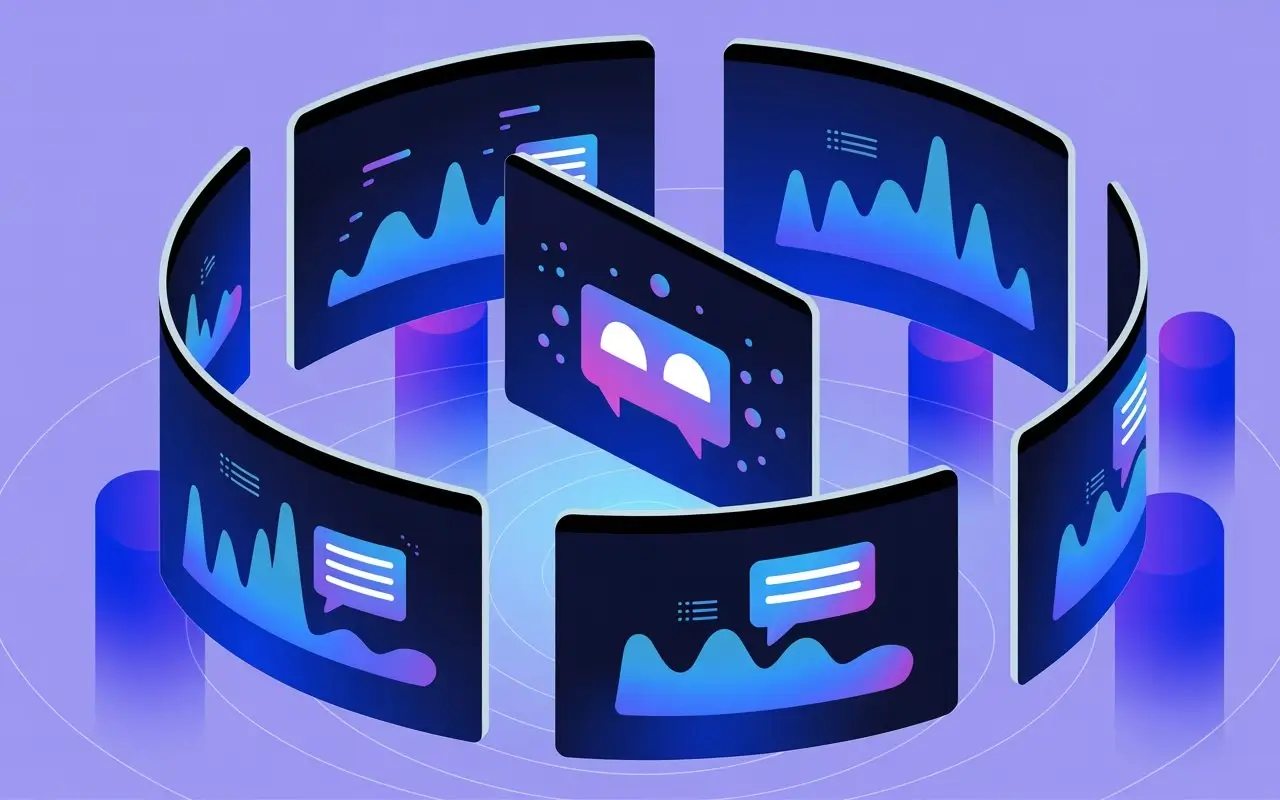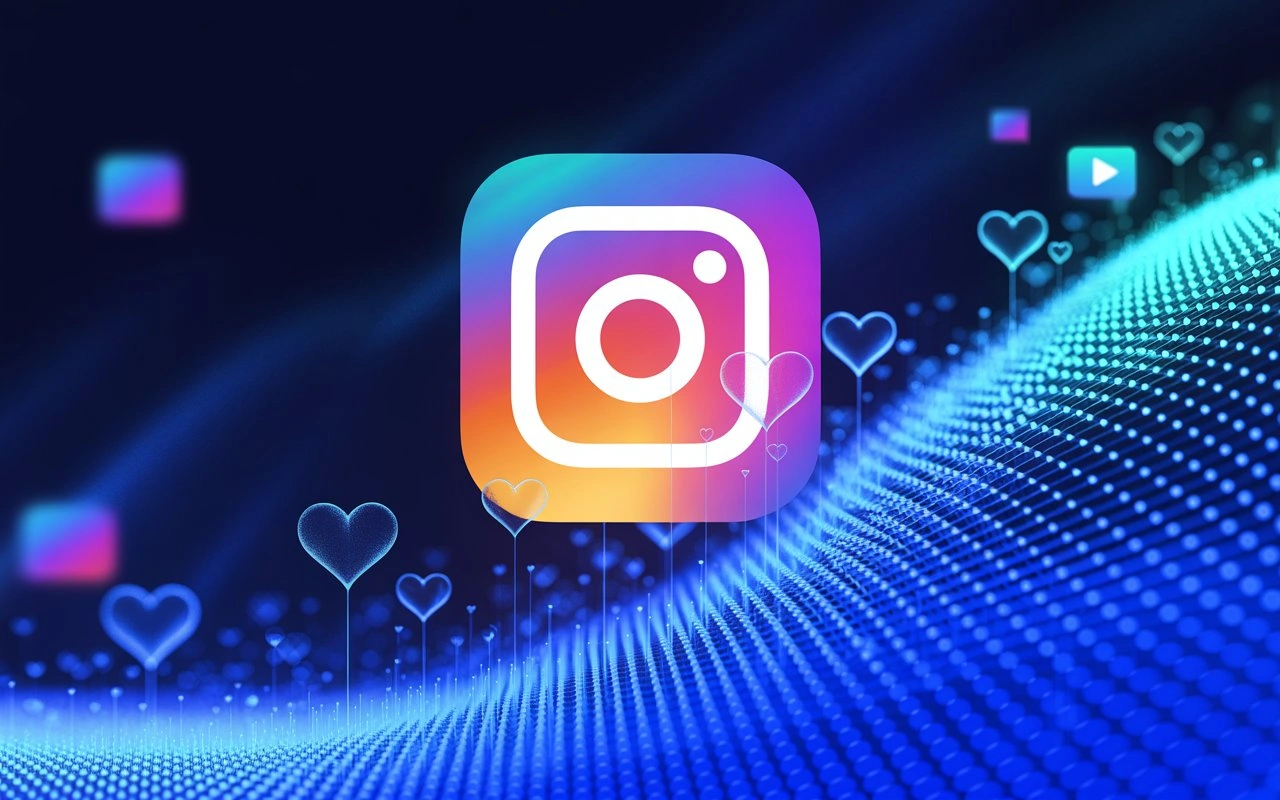Table Of Content
ChatGPT has quietly become part of how people get things done. What once felt like a futuristic experiment is now something students, professionals, and everyday users turn to for help with writing, research, planning, and more.
People use it to organize ideas, solve small problems, or simply save time. While everyone might use it a little differently, there’s one thing they have in common: they’re finding value in it.
In this report, we collected more than 150 statistics to show who’s using ChatGPT, what they’re using it for, and how those habits have evolved. You’ll get a closer look at trends across industries, age groups, and regions, with data that reflects how ChatGPT fits into the everyday routines of real people.
Global Adoption Rates
64% of internet users worldwide have interacted with ChatGPT at least once in the past year.
In 2025, ChatGPT usage among English-speaking countries sits at 71%, compared to 42% in non-English-speaking regions.

38% of all daily ChatGPT queries now come from outside North America and Europe.
The top five countries by user volume in 2025 are the United States (19%), India (15%), Brazil (8%), the Philippines (6%), and the United Kingdom (5%).

51% of users in Asia report using ChatGPT weekly, compared to 44% in Europe and 37% in South America.
Among global university students, 62% have used ChatGPT for academic purposes in the last six months.
Mobile usage of ChatGPT now accounts for 57% of all global sessions, up from 49% in 2024.
In Sub-Saharan Africa, adoption rose to 28% in 2025, compared to 16% in 2023.
The adoption rate in urban areas globally is 61%, compared to 33% in rural regions.
User Demographics
54% of ChatGPT users in 2025 are aged between 18 and 34.
The gender split among global users is 52% male, 47% female, and 1% non-binary or other.
62% of college students report using ChatGPT at least once a week.
Among users with postgraduate degrees, 48% say they use ChatGPT regularly for professional tasks.
ChatGPT is used by 41% of freelancers across the writing, design, and development fields.
The platform sees the highest engagement from users aged 25–29, who account for 23% of all active sessions.
In the United States, 69% of users are under the age of 40, compared to 51% in Germany and 58% in Canada.

Among full-time employees, 45% say they’ve used ChatGPT to help with work-related tasks in the past month.
36% of users in rural areas are over the age of 45, compared to just 18% in urban areas.
Daily and Monthly Active Users
ChatGPT has an estimated 138 million monthly active users worldwide as of 2025.
On average, 17 million users interact with ChatGPT daily.
41% of monthly active users engage with ChatGPT at least three times per week.
The average user session lasts 7.4 minutes, with most queries completed in under 90 seconds.
In 2025, ChatGPT sees higher daily usage on weekdays (63%) compared to weekends (37%).

Among daily active users, 56% return to the platform more than once in a single day.
The United States accounts for 24% of all monthly active users, while India contributes 18% and the UK 7%.
Mobile users make up 61% of daily activity, compared to 39% on desktop.
Daily usage among students peaks between 6 PM and 10 PM, while professionals are most active from 9 AM to 1 PM.
Industry-Specific Usage
68% of marketing professionals report using ChatGPT to draft copy, generate content ideas, or run A/B test prompts.
In the tech sector, 54% of developers use ChatGPT for code suggestions, bug explanations, or documentation support.
Among educators, 47% say they’ve used ChatGPT to create lesson plans, quizzes, or assignment prompts.

39% of legal professionals have used ChatGPT for contract summarization, research support, or client explanations.
In the healthcare field, 22% of practitioners use ChatGPT for patient communication templates and continuing education summaries.
Marketing teams use ChatGPT 2.6x more often than finance teams for day-to-day tasks.
Compared to retail workers (19%), knowledge workers in media and publishing report a 63% usage rate.
HR departments use ChatGPT for job description drafting and candidate outreach in 48% of mid-sized companies.
Architects and engineers report a combined ChatGPT usage rate of 27%, primarily for proposal writing and technical breakdowns.
Most Common Use Cases
74% of ChatGPT users rely on it for writing assistance, including emails, reports, and social media content.
52% use ChatGPT for brainstorming ideas, whether for business projects, school assignments, or creative work.
Among students, 61% use ChatGPT for summarizing texts and explaining complex topics.
43% of users turn to ChatGPT for coding-related tasks, such as debugging or generating snippets.
In 2025, 68% of business professionals use ChatGPT for presentations and reports, compared to 39% of students.

46% of users aged 18–24 use ChatGPT for idea generation, compared to 27% of users aged 45–54.
59% of freelancers use ChatGPT to write client-facing content, while 33% of full-time employees say the same.
37% of users say they use ChatGPT primarily for quick research and fact-checking during work or study.
26% use it regularly for translating or rephrasing text across languages and tones.
Device and Platform Preferences
61% of ChatGPT sessions in 2025 come from mobile devices, while 39% are from desktop users.
Among mobile users, 48% prefer using the dedicated app, compared to 13% who use it through a mobile browser.
Desktop usage peaks between 9 AM and 1 PM, while mobile usage is highest from 7 PM to 10 PM.

Tablet users make up 6% of all sessions, with the majority using ChatGPT for reading and summarizing content.
ChatGPT is used on iOS devices by 42% of mobile users, compared to 56% on Android and 2% on other.
Users aged 35 and above are 2.1x more likely to access ChatGPT on a desktop than those aged 18–24.
33% of students prefer accessing ChatGPT via school-issued Chromebooks, especially for writing and tutoring help.
29% of all app users enable voice input, while 14% use text-to-speech features.
The mobile app has a 4.6-star average rating across major app stores based on 1.2 million reviews.
Geographic Distribution
As of 2025, 32% of all global ChatGPT users are based in Asia.
North America accounts for 21% of ChatGPT’s total user base, with the United States leading individual country usage.
In South America, Brazil represents 47% of the region’s ChatGPT activity.
ChatGPT has a 9% user share in Africa, with Nigeria and South Africa as the two most active countries.
Europe contributes 18% of global usage, with the UK, Germany, and France leading the continent.
Users in Southeast Asia are 2.5x more likely to access ChatGPT daily compared to users in Western Europe.
Compared to rural regions (26%), urban areas account for 61% of total global usage.
Oceania, led by Australia, represents 3.4% of worldwide ChatGPT sessions.
In multilingual countries like India, 58% of users interact with ChatGPT in English, while 22% use Hindi and other regional languages.

Time Spent Using ChatGPT
The average ChatGPT user spends 23 minutes per day across multiple sessions.
34% of users say they use ChatGPT for fewer than 10 minutes at a time.
Power users, who engage with ChatGPT daily, log an average of 3.1 hours per week.
Students spend 27% more time per session than working professionals, often due to extended writing and research tasks.
41% of users complete their sessions in under 5 minutes, typically for quick answers or simple rewrites.
Evening hours, between 8 PM and 11 PM, account for 38% of total daily usage time across all regions.
Compared to mobile users (19 minutes), desktop users spend an average of 26 minutes per day on ChatGPT.

Users who rely on ChatGPT for creative writing spend an average of 34 minutes per session, the longest among all use cases.
11% of users report spending over 5 hours per week using ChatGPT for both work and personal projects.
Enterprise vs. Individual Usage
46% of ChatGPT’s total traffic in 2025 comes from individual users, while 54% is attributed to enterprise accounts.

Among small businesses, 38% use ChatGPT for customer support, marketing, or internal documentation.
61% of enterprise teams report using ChatGPT to streamline internal communications and automate repetitive writing tasks.
Individual users are 2.3x more likely to use ChatGPT for creative writing compared to enterprise users.
In companies with over 500 employees, 72% have integrated ChatGPT into at least one team workflow.
Freelancers represent 19% of all individual ChatGPT users, primarily using it for writing, pitching, and idea development.
Enterprise users average 4.5 sessions per workday, while individuals average 2.8 sessions per day.

Startups with fewer than 50 employees are 1.8x more likely to use ChatGPT daily than large enterprises.
29% of individual users report using ChatGPT for personal learning or skill development.
Paid vs. Free Plan Adoption
As of 2025, 38% of ChatGPT users are subscribed to a paid plan, while 62% continue using the free version.
71% of paid users say they upgraded primarily for faster response times and access to premium features.
Free plan users account for 59% of total daily traffic, despite having lower session lengths on average.
Users on the paid plan spend an average of 29 minutes per day on ChatGPT, compared to 18 minutes for free users.
Students are 2.6x more likely to stay on the free plan compared to working professionals.
In the United States, 44% of users are on a paid plan, versus 21% in Southeast Asia and 27% in Europe.

Among all paid users, 63% say they use ChatGPT for both work and personal tasks.
Free plan users are 3x more likely to use ChatGPT late at night compared to those on paid plans.
52% of freelancers using ChatGPT have chosen to stay on the free tier, mainly for writing and editing tasks.
Growth Trends Over Time
ChatGPT's global user base grew from 86 million in 2023 to 138 million in 2025.
Monthly active users increased by 47% between 2024 and 2025 alone.
The number of enterprise accounts rose from 18,000 in 2023 to 42,000 by mid-2025.
Between 2022 and 2025, average daily sessions per user climbed from 1.4 to 2.7.
Usage in Latin America doubled from 7% of global traffic in 2023 to 14% in 2025.

Mobile-based sessions made up 49% in 2024 and now account for 61% of all traffic in 2025.
The average user session duration grew from 6.1 minutes in 2022 to 7.4 minutes in 2025.
ChatGPT adoption in educational institutions increased by 58% between 2023 and 2025.
Between 2024 and 2025, paid subscriptions saw a 33% year-over-year increase.
ChatGPT API Usage Statistics
As of 2025, ChatGPT’s API handles an average of 2.3 billion requests per month.
41% of all API traffic comes from integrations with SaaS platforms and productivity tools.
Startups represent 34% of total API users, mostly for automating customer support and content generation.
The average response time for API requests is 620 milliseconds, based on current performance benchmarks.
Compared to 2023, API adoption among e-commerce platforms has grown by 2.1x in 2025.
Developers working in fintech use the ChatGPT API 1.8x more frequently than those in the healthcare sector.
46% of API users are based in North America, followed by 28% in Europe and 18% in Asia.

Small businesses using the API generate an average of 84,000 requests monthly, primarily for backend automation.
63% of companies using the API also subscribe to ChatGPT’s premium support plan for faster response handling and uptime guarantees.
Education and Academic Use
62% of university students report using ChatGPT for writing, studying, or research.
Among high school students, 38% say they’ve used ChatGPT at least once for homework support.
47% of teachers use ChatGPT to create quizzes, lesson plans, or study materials.
In the US, 71% of college faculty are aware of ChatGPT, but only 29% actively use it in class preparation.

Students aged 18–24 use ChatGPT weekly at a rate of 64%, compared to 26% of students aged 30 and above.
In 2025, 54% of public school teachers have used ChatGPT at least once, compared to 36% in private schools.
56% of students say ChatGPT helps them better understand complex topics when used alongside textbooks.
ChatGPT is integrated into 41% of online learning platforms as a tutor or writing assistant.
22% of educators express concerns about students over-relying on ChatGPT for take-home assignments.
Content Creation and Marketing Usage
66% of content marketers say they use ChatGPT weekly to generate blog outlines, product descriptions, or ad copy.
Among social media managers, 48% rely on ChatGPT to write captions, schedule posts, or respond to comments.
53% of email marketers report using ChatGPT to draft subject lines, newsletter intros, or campaign content.
In 2025, 69% of freelance digital marketers use ChatGPT for writing tasks, compared to 41% of in-house brand teams.

64% of small marketing teams (fewer than 10 members) use ChatGPT regularly, compared to 39% of teams with over 50 people.
51% of marketers used ChatGPT for video scriptwriting in 2025, up from 37% in 2023.
59% of SEO professionals use ChatGPT to brainstorm keyword-rich content ideas or rephrase on-page copy.
Agencies report that using ChatGPT reduces content turnaround time by an average of 42%.
28% of marketers say ChatGPT helps them overcome creative blocks and stay consistent with brand tone.
Programming and Development Use
49% of developers say they use ChatGPT at least once a week for coding support, documentation, or learning new languages.
57% of junior developers rely on ChatGPT to understand error messages, debug code, or improve syntax.
Among full-stack developers, 38% use ChatGPT for generating reusable components and boilerplate code.
61% of developers in startups use ChatGPT daily, compared to 26% in large enterprises.
In 2025, 41% of developers use ChatGPT for DevOps tasks, up from 28% in 2023.

48% of web developers use ChatGPT for HTML/CSS tasks, compared to 25% of mobile developers working in Swift or Kotlin.
Python-related queries account for 31% of all code-based interactions on ChatGPT in 2025.
Developers using ChatGPT report an average time savings of 27 minutes per project, particularly during early-stage prototyping.
22% of backend engineers use ChatGPT primarily for writing SQL queries and optimizing database interactions.
Concerns and Limitations Noted by Users
44% of ChatGPT users say they occasionally receive responses that are too vague or overly generic.
31% of users have experienced outdated or inaccurate information when asking for recent data.
52% of students express concern about relying too much on ChatGPT for academic work without cross-checking sources.
In 2025, 41% of freelancers report repetition in creative outputs, compared to 19% of full-time employees.
28% of users say ChatGPT struggles with highly technical or domain-specific questions, especially in legal or medical fields.
29% of users reported hallucinated facts in 2023, compared to 23% in 2025, marking a drop of 6 points.

38% of non-native English speakers report tone issues in ChatGPT outputs, compared to 24% of native speakers.
37% of professionals using the tool for client work still manually review and revise every response before use.
18% of users avoid using ChatGPT for sensitive or confidential topics due to privacy concerns, despite reassurances.
Final Words
The data makes one thing clear. ChatGPT has become a reliable part of daily life for many people.
It’s used by students tackling assignments, marketers writing content, teams managing tasks, and individuals looking for quick solutions.
The ways people use it are varied, but the reason is simple: it works. Whether someone is brainstorming ideas or cleaning up a rough draft, ChatGPT helps make the process smoother.
These 150+ statistics give us a realistic view of how deeply it’s being used in 2025. It’s not just a trend or a shortcut. It’s something people rely on to keep up with their work, improve what they’re doing, and make the most of their time.
Create videos 10x faster and easier with Zebracat
Try it now









Comments